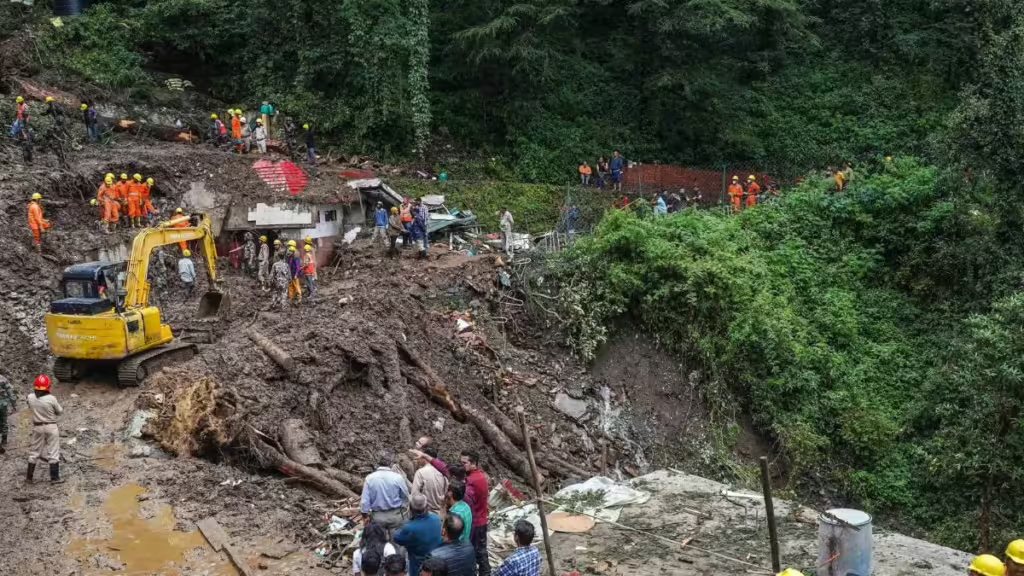
Why this matters ( now more than ever )
India’s southwest monsoon (June – September) typically lifts hydropower and agriculture but it also soaks mines, slows pit operations, clogs haul roads, and squeezes ports and rail. In 2024, the monsoon delivered 108% of the long-period average rainfall across India, reinforcing just how seasonal mining and logistics risks are. In 2025, utilities entered the rains with record coal stocks precisely to offset mining and transport slowdowns. That’s your cue : monsoon risk isn’t a “black swan” – it’s an annual, predictable stress test you can plan around.
The monsoon risk map : where supply chains pinch?
Mine Production Dips
Open-cast mines (coal, iron ore) reduce stripping and blasting during heavy rainfall, pit dewatering and slope stability become binding constraints. Coal India’s output fell 8.5% in June 2025, underscoring how quickly volumes soften around the rains. Iron ore belts in Odisha/Karnataka routinely curtail activity when downpours swell pit water levels and saturate overburden.
Evacuation Tightens
Wet haul roads, slippage risk, and axle-load restrictions extend cycle times. Rail rake availability becomes tighter as power plants prioritize rakes to build/maintain stocks. Ahead of monsoon 2025, India pushed plant inventories to ~58.25 Mt (25 days) to cushion transport and mine slowdowns.
Ports + Coastal Weather
On the west coast, monsoon swells and cross-winds reduce loading windows and sometimes suspend certain cargo operations. Regional schedules face bunching and yard build-ups, carriers flagged berthing delays and higher yard density through the 2025 monsoon onset. Even projects (e.g., expansion works) pause and resume after sea conditions improve.
Demand Whiplash
Hydropower rises seasonally while temperatures drop, trimming coal burn, July 2025 saw coal-fired output decline while hydro and renewables gained share, prompting plants to lean on stockpiles and cut fresh purchases. If you’re a non-utility buyer, that mix shift can free up rail/berth capacity but it can also distort spot prices.
What the data says ( 2024–2025 )
- Rainfall : 2024 monsoon at 108% of LPA, IMD projected above-normal tendencies early in the season.
- Coal buffers : Government drove power plant coal stocks to ~58.25 Mt pre-monsoon 2025 (≈25 days).
- Production seasonality : Coal India posted an 8.5% m/m output drop in June 2025.
- Logistics : Carriers reported monsoon-linked berthing delays, regional congestion at transshipment hubs affected schedules.
- Environmental sensitivity : Poor waste rock placement near waterways washes fines/spoil into streams in monsoon, a reminder to vet ESG practices of suppliers.
A practical, “Rain-Proof” sourcing playbook
Calendar Strategy : Buy to the Seasons
- Front-load contracts (Apr–May) for July – Sept consumption, use optionality for Oct – Nov uplift if mines lag post-monsoon.
- Insist on delivery windows (not single dates) and demurrage clauses that reflect monsoon realities.
Portfolio Strategy : Diversify Origin + Format
- Blend domestic + import : When mines slow, imports via east/west coasts (e.g., RB coal, Indo thermal, pellets) can bridge.
- For iron units, balance pellets with scrap and pig iron to keep furnaces fed if one stream falters.
Logistics Strategy : Build slack where it matters
- Rakes : Lock rake allotments early; coordinate with plants drawing down stocks (they often release rakes to non-utility buyers mid-season).
- Ports : Split volumes across at least two ports per coast, and use terminals with all-weather berths where possible.
- Transshipment : Factor Colombo/Middle East hub congestion during rough weather, pre-book feeder windows.
Inventory Strategy : Carry smart buffers, not dead stock
- Benchmark your days-of-cover against utilities’ pre-monsoon target (≈25 days in 2025). For energy-intensive plants, 10–15 days on site + pipeline inventory often beats a large on-ground pile that degrades in rain.
Quality Strategy : Monsoon-proof the spec
- Sampling & third-party assays : Rain raises total moisture (TM) and can alter GCV (ARB). Make contracts on ADB/DB basis with moisture penalties and re-sampling rights.
- For met coke, monitor CRI/CSR stability (wet handling can increase fines and lower strength post-handling).
- Iron ore buyers : Insist on TI/AI (tumbler/abrasion index) during the season; wet handling increases fines carryover.
Contract Strategy : Write weather into your terms
- Force majeure definitions that are specific to port closure/sea-state limits and haul-road inaccessibility.
- Price bands tied to indices + FX collars to manage INR volatility during weather-driven schedule slippage.
Digital Visibility : See the storm before it hits
- Subscribe to IMD nowcasts and port congestion dashboards; use carrier advisories and terminal yard-density alerts to re-sequence shipments
Buyer Checklist ( Pin this)
- Pre-monsoon buffer : Lock 10–15 days on site; align with plant maintenance windows.
- Two-origin policy : At least one domestic, one import route.
- Two-port policy : Split berths to avoid weathered closures.
- Rake + truck mix : Don’t over-depend on a single evacuation mode.
- Spec guardrails : ADB/DB basis; moisture/ash penalties; re-sampling rights.
- Claims workflow : Pre-agreed turn-around for quality/short-landing claims.
- ESG hygiene : Verify overburden and silt-trap management in monsoon belts. Human Rights Watch
Monsoon risk is manageable risk if you engineer your sourcing like a portfolio, not a purchase order. Build buffers before the rains, diversify origins and ports, hard-code weather into your contracts, and keep your quality basis watertight. The companies that treat monsoon like a supply-chain design parameter, not a surprise, will ship on time while others sit out the storm.
